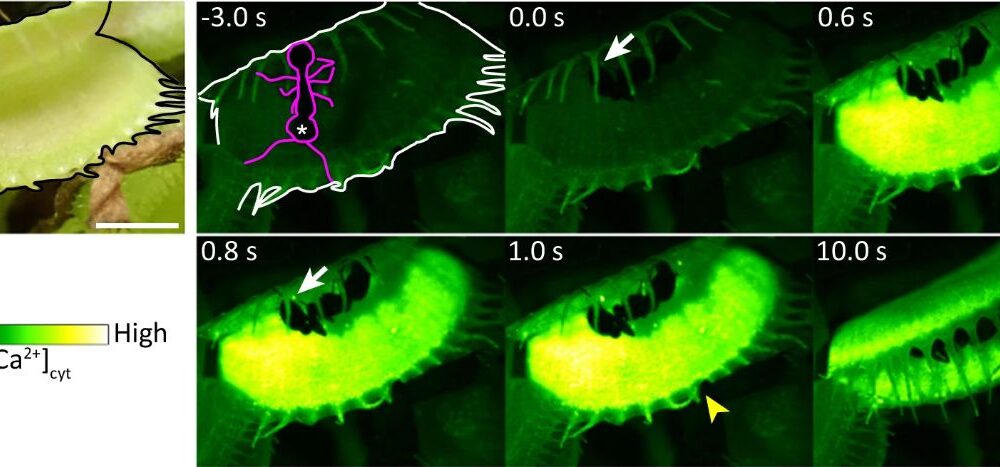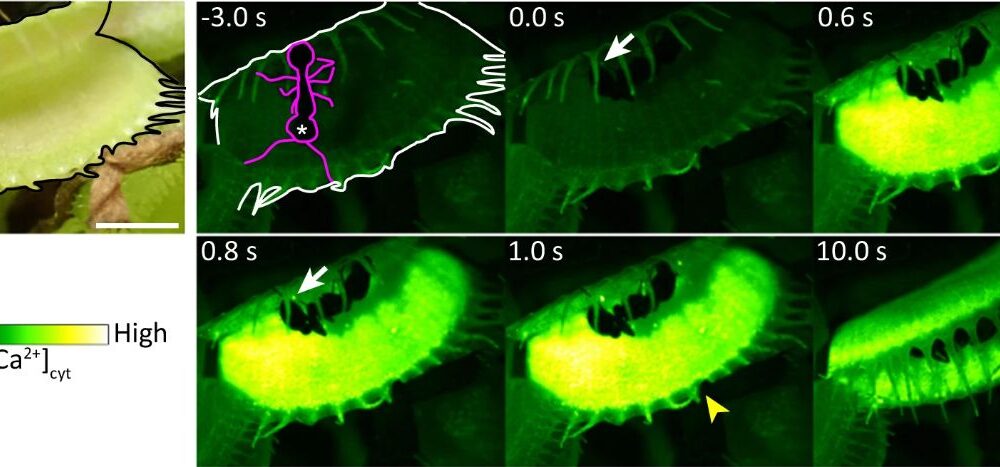The intricate mechanisms that allow the Venus flytrap (Dionaea muscipula) to spring into action have been illuminated by new research from a team led by Hiraku Suda. Published in Nature Communications, the study identifies a mechanosensor, known as DmMSL10, as central to the plant’s rapid response to prey.
Carnivorous plants, particularly species like the Venus flytrap, capture unsuspecting insects using a specialized trap that functions similarly to a spring. While other carnivorous plants, such as the waterwheel plant (Aldrovanda vesiculosa), exhibit slower movement over several seconds, the Venus flytrap is renowned for its swift reflexes. The study provides crucial insights into the biological processes underlying this remarkable speed.
The research team focused on the sensory hairs lining the leaves of the Venus flytrap, which respond to specific stimuli via calcium threshold signals. Although the involvement of calcium ions was known, the precise mechanism remained unclear until now. By creating a knockout variant of the D. muscipula that lacks the DmMSL10 mechanosensor, researchers observed significant differences in the plant’s reaction to touch.
The Role of DmMSL10 in Prey Detection
In their experiments, the researchers noted that while the mechanical stimulation of the sensor hairs triggered calcium ion release in both the wild-type and knockout variants, the knockout variant exhibited a markedly lower action potential generation rate. The wild-type Venus flytrap continued to produce action potentials even after stimulation ceased, demonstrating the essential role of DmMSL10 in processing even slight touches, which are vital for detecting prey.
Further tests involved allowing ants to wander on the leaves of both the wild-type and knockout plants. The wild-type plant successfully captured the first ant that touched its leaf, while the knockout variant failed to respond, even after four successive ants passed over it. This stark contrast underscores the significance of DmMSL10 in the plant’s ability to generate long-range calcium signals necessary for its predatory behavior.
The findings not only deepen our understanding of the Venus flytrap’s biology but also open avenues for exploring how similar mechanisms may have evolved in animals. The research highlights the interconnectedness of plant and animal sensory systems, paving the way for future studies that could uncover the evolutionary pathways that lead to such sophisticated mechanisms.
As researchers continue to explore the fascinating world of carnivorous plants, the study of DmMSL10 stands as a significant leap forward in understanding how Dionaea muscipula and other similar species manage to thrive in nutrient-poor environments by harnessing the energy of their prey.






